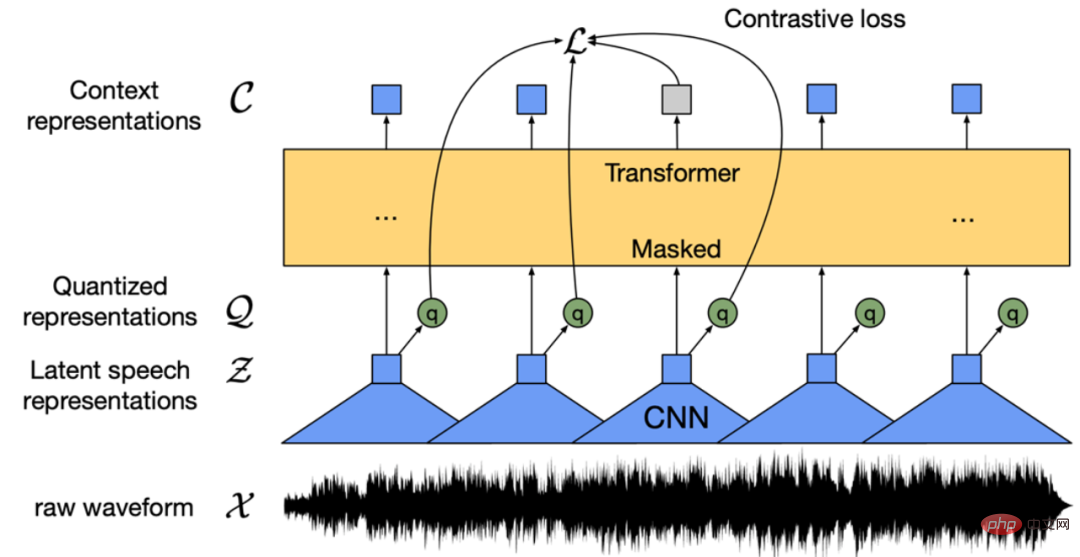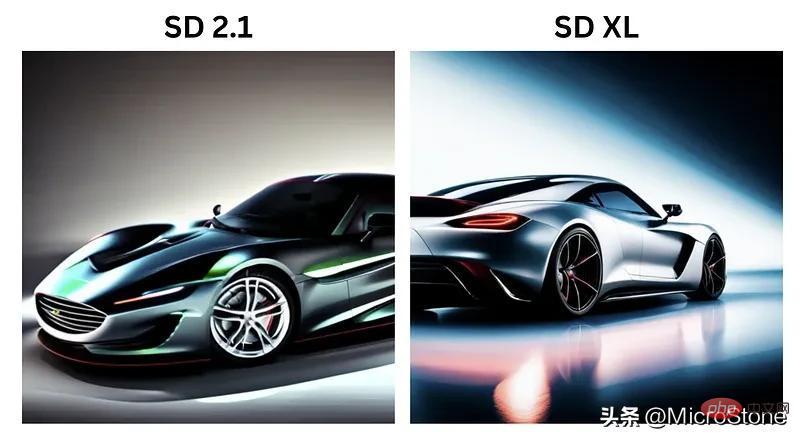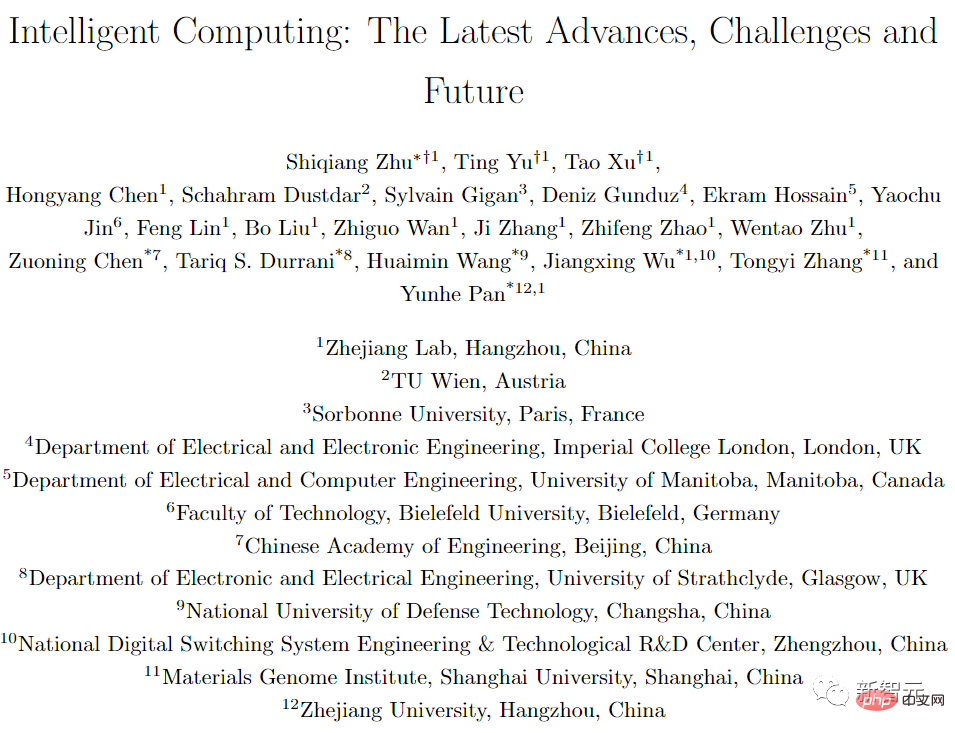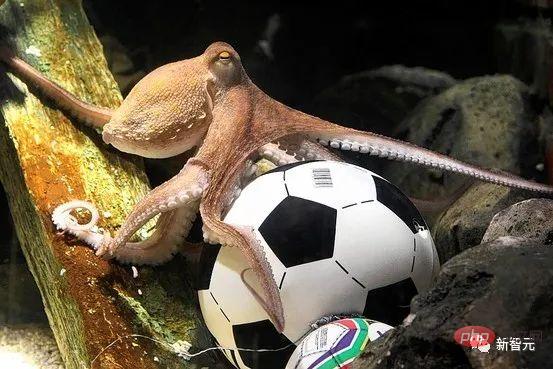 Technology peripherals
Technology peripherals AI
AI Is the Llama architecture inferior to GPT2? Magical token improves memory 10 times?
Is the Llama architecture inferior to GPT2? Magical token improves memory 10 times?How much human knowledge can a 7B scale language model LLM store? How to quantify this value? How will differences in training time and model architecture affect this value? What impact will floating-point compression quantization, mixed expert model MoE, and differences in data quality (encyclopedia knowledge vs. Internet garbage) have on the knowledge capacity of LLM?
The latest research by Zhu Zeyuan (Meta AI) and Li Yuanzhi (MBZUAI) "Language Model Physics Part 3.3: Scaling Laws of Knowledge" uses massive experiments (50,000 tasks, a total of 4,200,000 GPU hours ) summarizes 12 laws and provides a more accurate measurement method for the knowledge capacity of LLM under different documents.

The author first points out that it is unrealistic to measure the scaling law of LLM through the performance of open source models on benchmark data sets (benchmark). For example, LLaMA-70B performs 30% better than LLaMA-7B on the knowledge data set. This does not mean that expanding the model by 10 times can only increase the capacity by 30%. If a model is trained using network data, it will also be difficult to estimate the total amount of knowledge contained in it.
For another example, when we compare the quality of the Mistral and Llama models, is the difference caused by their different model architectures, or is it caused by the different preparation of their training data?
Based on the above considerations, the author adopts the core idea of their "Language Model Physics" series of papers, which is to create artificially synthesized data and strictly control the amount and type of knowledge in the data. Regulate the knowledge bits in the data. At the same time, the author uses LLMs of different sizes and architectures to train on synthetic data, and gives mathematical definitions to accurately calculate how many bits of knowledge the trained model has learned from the data.

- Paper address: https://arxiv.org/pdf/2404.05405.pdf
- Paper title: Physics of Language Models: Part 3.3, Knowledge Capacity Scaling Laws
For this research, someone It seems reasonable to indicate this direction. We can analyze scaling law in a very scientific way.

Some people also believe that this research takes scaling law to a different level. Certainly a must-read paper for practitioners.

Research Overview
The authors studied three types of synthetic data: bioS, bioR, bioD . bioS is a biography written using English templates, bioR is a biography written with the help of the LlaMA2 model (22GB total), bioD is a kind of virtual knowledge data that can further control the details (for example, the length of the knowledge and the vocabulary can be controlled Wait for details). The author focuses on the language model architecture based on GPT2, LlaMA, and Mistral, among which GPT2 uses the updated Rotary Position Embedding (RoPE) technology.

The picture on the left shows the scaling laws with sufficient training time, and the picture on the right shows scaling laws with insufficient training time
Top Figure 1 briefly summarizes the first 5 laws proposed by the author. The left/right correspond to the two situations of "sufficient training time" and "insufficient training time" respectively, which respectively correspond to common knowledge (such as the capital of China is Beijing) and less Emerging knowledge (for example, the Department of Physics at Tsinghua University was established in 1926).
If the training time is sufficient, the author found that no matter which model architecture is used, GPT2 or LlaMA/Mistral, the storage efficiency of the model can reach 2bit/param - that is, the average per model Parameters can store 2 bits of information. This has nothing to do with model depth, only model size. In other words, a 7B model, if adequately trained, can store 14B bits of knowledge, which is more than the human knowledge in Wikipedia and all English textbooks combined!
What is even more surprising is that although the traditional theory is that the knowledge in the transformer model is mainly stored in the MLP layer, the author's research refutes this view. They found that even if all MLP layers are removed, the model still It can achieve a storage efficiency of 2bit/param.

Figure 2: Scaling laws when training time is insufficient
However, when we observe the training When time is insufficient, differences between models become apparent. As shown in Figure 2 above, in this case, the GPT2 model can store 30% more knowledge than LlaMA/Mistral, which means that the model from a few years ago surpasses today's model in some aspects. Why is this happening? The author made architectural adjustments on the LlaMA model, adding or subtracting each difference between the model and GPT2, and finally found that GatedMLP caused the 30% loss.
To emphasize, GatedMLP does not cause a change in the "final" storage rate of the model - because Figure 1 tells us that they will not be different if the training is sufficient. However, GatedMLP will lead to unstable training, so the same knowledge requires longer training time; in other words, for knowledge that rarely appears in the training set, the storage efficiency of the model will decrease.

The author’s laws 8 and Law 9 separately studies the impact of quantization and MoE on the model scaling law, and the conclusion is shown in Figure 3 above. One result is that compressing the trained model from float32/16 to int8 has no impact on the storage of knowledge, even for models that have reached the 2bit/param storage limit.
This means that LLM can reach 1/4 of the "information theory limit" - because the int8 parameter is only 8 bits, but on average each parameter can store 2 bits of knowledge. The author points out that this is a universal law and has nothing to do with the form of knowledge expression.
The most striking results come from the authors’ laws 10-12 (see Figure 4). If our (pre-)training data, 1/8 comes from high-quality knowledge bases (such as Baidu Encyclopedia), and 7/8 comes from low-quality data (such as common crawl or forum conversations, or even completely random garbage data).
So,
Will low-quality data affect LLM’s absorption of high-quality knowledge? The results are surprising. Even if the training time for high-quality data remains consistent, the "existence itself" of low-quality data may reduce the model's storage of high-quality knowledge by 20 times! Even if the training time on high-quality data is extended by 3 times, the knowledge reserve will still be reduced by 3 times. This is like throwing gold into the sand, and high-quality data is being wasted.
Is there any way to fix it? The author proposed a simple but extremely effective strategy, which simply adds your own website domain name token to all (pre)training data. For example, add all Wikipedia data to wikipedia.org. The model does not require any prior knowledge to identify which websites have "gold" knowledge, but canautomatically discover websites with high-quality knowledge during the pre-training process, and automatically This high-quality data frees up storage space.
The author proposed a simple experiment to verify: if high-quality data is added with a special token (any special token will do, the model does not need to know which token it is in advance), then The knowledge storage capacity of the model can be increased by 10 times immediately. Isn’t it amazing? Therefore, adding domain name token to pre-training data is an extremely important data preparation operation.
Figure 4: Scaling laws, model defects and how to repair them when pre-training data has "inconsistent knowledge quality"
Conclusion
The author believes that by synthesizing data, the method of calculating the total amount of knowledge obtained by the model during the training process can be used to "evaluate the model architecture, training methods and "Data Preparation" provides a systematic and accurate scoring system. This is completely different from traditional benchmark comparisons and is more reliable. They hope this will help designers of future LLMs make more informed decisions.
The above is the detailed content of Is the Llama architecture inferior to GPT2? Magical token improves memory 10 times?. For more information, please follow other related articles on the PHP Chinese website!
 从VAE到扩散模型:一文解读以文生图新范式Apr 08, 2023 pm 08:41 PM
从VAE到扩散模型:一文解读以文生图新范式Apr 08, 2023 pm 08:41 PM1 前言在发布DALL·E的15个月后,OpenAI在今年春天带了续作DALL·E 2,以其更加惊艳的效果和丰富的可玩性迅速占领了各大AI社区的头条。近年来,随着生成对抗网络(GAN)、变分自编码器(VAE)、扩散模型(Diffusion models)的出现,深度学习已向世人展现其强大的图像生成能力;加上GPT-3、BERT等NLP模型的成功,人类正逐步打破文本和图像的信息界限。在DALL·E 2中,只需输入简单的文本(prompt),它就可以生成多张1024*1024的高清图像。这些图像甚至
 找不到中文语音预训练模型?中文版 Wav2vec 2.0和HuBERT来了Apr 08, 2023 pm 06:21 PM
找不到中文语音预训练模型?中文版 Wav2vec 2.0和HuBERT来了Apr 08, 2023 pm 06:21 PMWav2vec 2.0 [1],HuBERT [2] 和 WavLM [3] 等语音预训练模型,通过在多达上万小时的无标注语音数据(如 Libri-light )上的自监督学习,显著提升了自动语音识别(Automatic Speech Recognition, ASR),语音合成(Text-to-speech, TTS)和语音转换(Voice Conversation,VC)等语音下游任务的性能。然而这些模型都没有公开的中文版本,不便于应用在中文语音研究场景。 WenetSpeech [4] 是
 普林斯顿陈丹琦:如何让「大模型」变小Apr 08, 2023 pm 04:01 PM
普林斯顿陈丹琦:如何让「大模型」变小Apr 08, 2023 pm 04:01 PM“Making large models smaller”这是很多语言模型研究人员的学术追求,针对大模型昂贵的环境和训练成本,陈丹琦在智源大会青源学术年会上做了题为“Making large models smaller”的特邀报告。报告中重点提及了基于记忆增强的TRIME算法和基于粗细粒度联合剪枝和逐层蒸馏的CofiPruning算法。前者能够在不改变模型结构的基础上兼顾语言模型困惑度和检索速度方面的优势;而后者可以在保证下游任务准确度的同时实现更快的处理速度,具有更小的模型结构。陈丹琦 普
 解锁CNN和Transformer正确结合方法,字节跳动提出有效的下一代视觉TransformerApr 09, 2023 pm 02:01 PM
解锁CNN和Transformer正确结合方法,字节跳动提出有效的下一代视觉TransformerApr 09, 2023 pm 02:01 PM由于复杂的注意力机制和模型设计,大多数现有的视觉 Transformer(ViT)在现实的工业部署场景中不能像卷积神经网络(CNN)那样高效地执行。这就带来了一个问题:视觉神经网络能否像 CNN 一样快速推断并像 ViT 一样强大?近期一些工作试图设计 CNN-Transformer 混合架构来解决这个问题,但这些工作的整体性能远不能令人满意。基于此,来自字节跳动的研究者提出了一种能在现实工业场景中有效部署的下一代视觉 Transformer——Next-ViT。从延迟 / 准确性权衡的角度看,
 Stable Diffusion XL 现已推出—有什么新功能,你知道吗?Apr 07, 2023 pm 11:21 PM
Stable Diffusion XL 现已推出—有什么新功能,你知道吗?Apr 07, 2023 pm 11:21 PM3月27号,Stability AI的创始人兼首席执行官Emad Mostaque在一条推文中宣布,Stable Diffusion XL 现已可用于公开测试。以下是一些事项:“XL”不是这个新的AI模型的官方名称。一旦发布稳定性AI公司的官方公告,名称将会更改。与先前版本相比,图像质量有所提高与先前版本相比,图像生成速度大大加快。示例图像让我们看看新旧AI模型在结果上的差异。Prompt: Luxury sports car with aerodynamic curves, shot in a
 五年后AI所需算力超100万倍!十二家机构联合发表88页长文:「智能计算」是解药Apr 09, 2023 pm 07:01 PM
五年后AI所需算力超100万倍!十二家机构联合发表88页长文:「智能计算」是解药Apr 09, 2023 pm 07:01 PM人工智能就是一个「拼财力」的行业,如果没有高性能计算设备,别说开发基础模型,就连微调模型都做不到。但如果只靠拼硬件,单靠当前计算性能的发展速度,迟早有一天无法满足日益膨胀的需求,所以还需要配套的软件来协调统筹计算能力,这时候就需要用到「智能计算」技术。最近,来自之江实验室、中国工程院、国防科技大学、浙江大学等多达十二个国内外研究机构共同发表了一篇论文,首次对智能计算领域进行了全面的调研,涵盖了理论基础、智能与计算的技术融合、重要应用、挑战和未来前景。论文链接:https://spj.scien
 什么是Transformer机器学习模型?Apr 08, 2023 pm 06:31 PM
什么是Transformer机器学习模型?Apr 08, 2023 pm 06:31 PM译者 | 李睿审校 | 孙淑娟近年来, Transformer 机器学习模型已经成为深度学习和深度神经网络技术进步的主要亮点之一。它主要用于自然语言处理中的高级应用。谷歌正在使用它来增强其搜索引擎结果。OpenAI 使用 Transformer 创建了著名的 GPT-2和 GPT-3模型。自从2017年首次亮相以来,Transformer 架构不断发展并扩展到多种不同的变体,从语言任务扩展到其他领域。它们已被用于时间序列预测。它们是 DeepMind 的蛋白质结构预测模型 AlphaFold
 AI模型告诉你,为啥巴西最可能在今年夺冠!曾精准预测前两届冠军Apr 09, 2023 pm 01:51 PM
AI模型告诉你,为啥巴西最可能在今年夺冠!曾精准预测前两届冠军Apr 09, 2023 pm 01:51 PM说起2010年南非世界杯的最大网红,一定非「章鱼保罗」莫属!这只位于德国海洋生物中心的神奇章鱼,不仅成功预测了德国队全部七场比赛的结果,还顺利地选出了最终的总冠军西班牙队。不幸的是,保罗已经永远地离开了我们,但它的「遗产」却在人们预测足球比赛结果的尝试中持续存在。在艾伦图灵研究所(The Alan Turing Institute),随着2022年卡塔尔世界杯的持续进行,三位研究员Nick Barlow、Jack Roberts和Ryan Chan决定用一种AI算法预测今年的冠军归属。预测模型图


Hot AI Tools

Undresser.AI Undress
AI-powered app for creating realistic nude photos

AI Clothes Remover
Online AI tool for removing clothes from photos.

Undress AI Tool
Undress images for free

Clothoff.io
AI clothes remover

AI Hentai Generator
Generate AI Hentai for free.

Hot Article

Hot Tools

DVWA
Damn Vulnerable Web App (DVWA) is a PHP/MySQL web application that is very vulnerable. Its main goals are to be an aid for security professionals to test their skills and tools in a legal environment, to help web developers better understand the process of securing web applications, and to help teachers/students teach/learn in a classroom environment Web application security. The goal of DVWA is to practice some of the most common web vulnerabilities through a simple and straightforward interface, with varying degrees of difficulty. Please note that this software

EditPlus Chinese cracked version
Small size, syntax highlighting, does not support code prompt function

Dreamweaver CS6
Visual web development tools

SublimeText3 Chinese version
Chinese version, very easy to use

MantisBT
Mantis is an easy-to-deploy web-based defect tracking tool designed to aid in product defect tracking. It requires PHP, MySQL and a web server. Check out our demo and hosting services.






